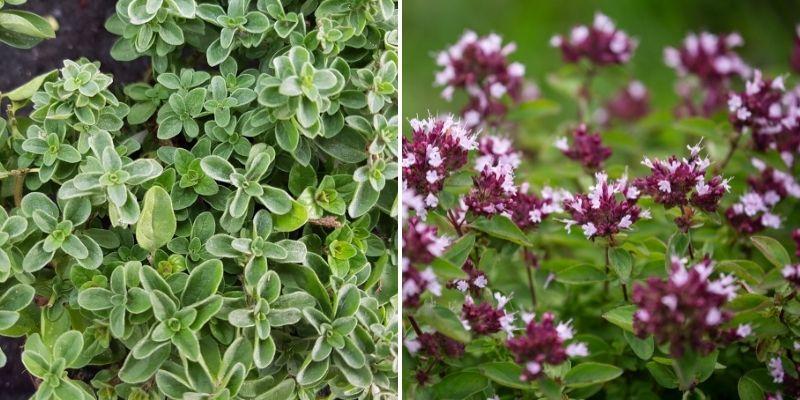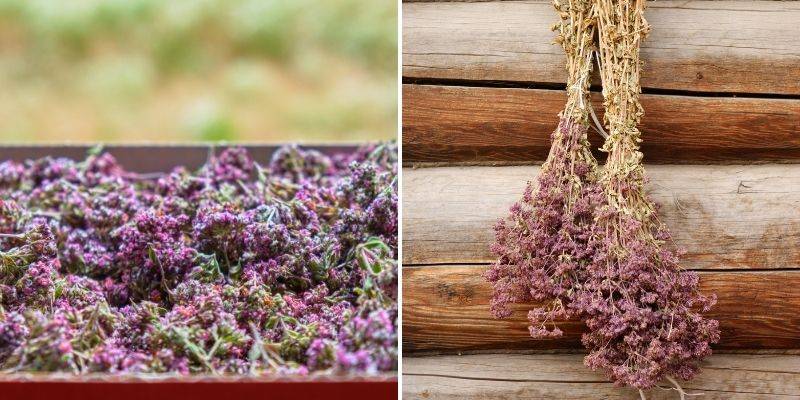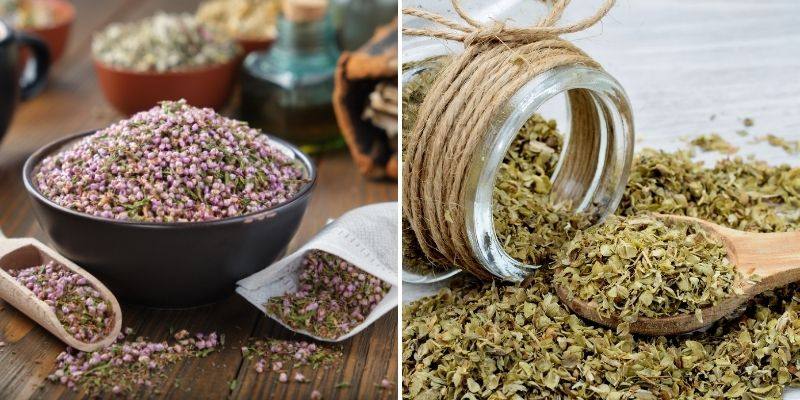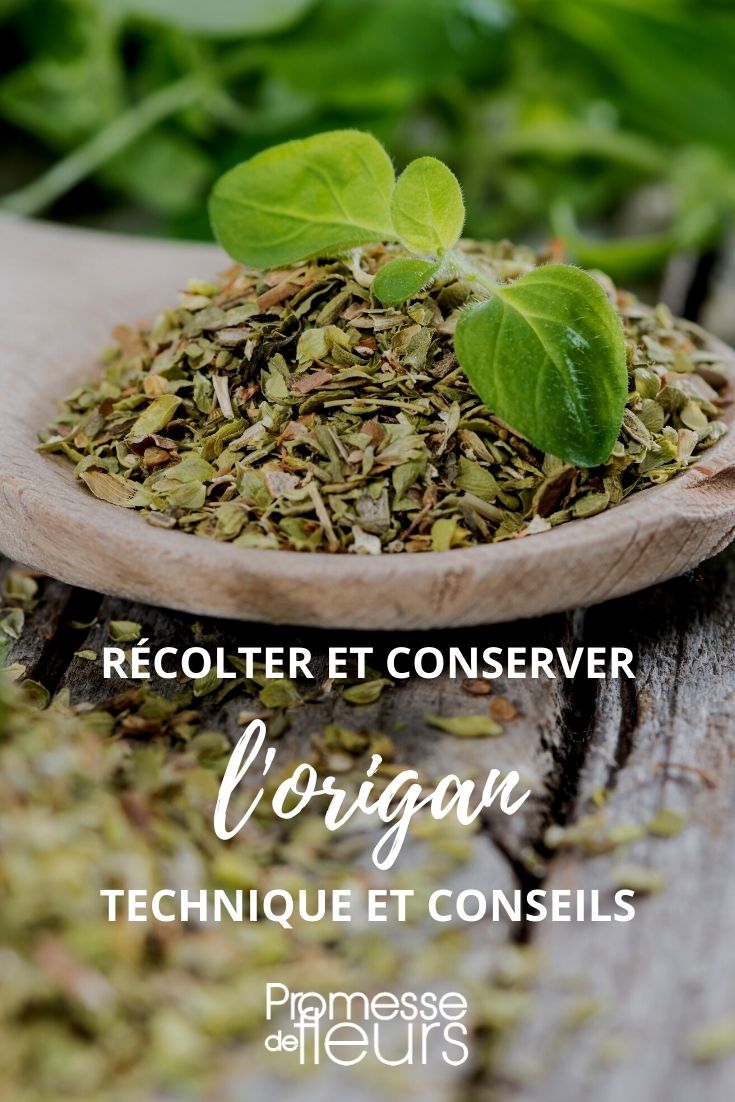Oregano, also known as wild marjoram, is a fragrant perennial herb with a very potent aroma, widely recognised for its use as a condiment in Italian cuisine, particularly on pizzas. It is also a key ingredient in the famous herbes de Provence blend. Although oregano and garden marjoram are two distinct species and should not be confused, both plants share similar and valuable medicinal properties.
Highly hardy, oregano is easy to grow in well-drained soil due to its tolerance for both summer heat and cold temperatures down to -15°C. It is often found growing on embankments. While the plant itself may appear relatively ordinary, its beautiful pink and purple flowering is highly melliferous and attracts numerous insects during the summer.
When to Harvest Oregano?
In cooking, oregano leaves are primarily used, whereas in herbal medicine, the flowering tops are more commonly employed. Harvesting, therefore, takes place in spring for the leaves and during the flowering period, from summer to autumn, for the flowers.
Harvest on dry days, preferably in the morning once the dew has evaporated. This ensures the oregano retains its full flavour and reduces the risk of mould developing during drying.
Use pruning shears to cut the upper two-thirds of the stems, where the flowers are not fully open. This not only shapes your young plant but also stimulates lateral shoots, allowing for a second harvest later in the season.

Oregano flowers and leaves
How to Dry Oregano?
While oregano leaves can be used fresh, drying the harvest allows you to enjoy the benefits of oregano tea throughout the winter. Here are the different methods available.
Air Drying
As harvesting mainly occurs in summer, the air is usually dry enough for air drying. Place the harvest in a dry, dark location.
There are two methods to choose from:
- Lay the cut stems flat on a tray or sheet of paper. Avoid overlapping them to prevent mould. Drying may take several days, depending on weather conditions. The plant is dry when the leaves crumble between your fingers. Tip: Covering the harvest with a sheet of paper protects it from light, allowing it to dry in the sun.
- Alternatively, create small bunches of about ten stems each. Ensure they are loose enough for all leaves to dry properly. Hang them upside down in a dry, dark place until completely dry.

Drying oregano flat or in small bunches
Oven Drying
If the weather is too humid for air drying, place the stems on a baking tray and dry them in the oven for several hours at a maximum temperature of 45°C to avoid cooking the plant. Keep the oven door slightly ajar to let moisture escape and speed up the process.
Using a Dehydrator
You can also dry oregano leaves and flowering tops in a dehydrator. Refer to your appliance’s manual for drying times.
How to Store Oregano?
Once the leaves and flowering tops are thoroughly dry, remove them from the stems. This is easily done by running your fingers along the stems.
If you plan to use oregano for both cooking and medicinal purposes, it may be wise to store the leaves and flowers separately in labelled bags or jars. Glass jars work well, provided they are kept away from light to preserve the plant’s active compounds.

Carefully remove the flowers from the dried stems and store leaves and flowers separately for different culinary or medicinal uses.
Storing Fresh Oregano
While drying is the primary storage method, note that dried oregano can develop a bitter flavour. If you prefer a fresher taste for cooking, consider alternative methods.
In the fridge, oregano stems can last up to a week if the base is kept moist, such as by wrapping it in damp absorbent paper.
For winter dishes, you can freeze washed, dried, and detached oregano leaves flat on a tray before transferring them to a freezer bag for later use.
How to Use Oregano?
In Cooking
Oregano leaves can be used fresh or dried. Fresh oregano—especially when raw—has a stronger aroma, so add it at the end of cooking to preserve its flavour.
It is a staple in Italian and Mediterranean cuisine, perfect for flavouring tomato sauces, fresh cheeses, and, of course, sprinkling on pizzas. It also pairs well with grilled dishes. You can infuse olive oil by adding a branch.

Dried oregano is ideal for seasoning pizza.
For Medicinal Use
The flowering tops are typically used for infusions. Use one teaspoon of dried herb per cup. Pour boiling water over the dried plant and steep for about ten minutes before drinking.
Benefits of Oregano
When used as an infusion, oregano is reputed to have the following properties:
- Digestive. It may help reduce bloating and flatulence while stimulating digestion.
- Expectorant. It could aid in relieving bronchial inflammation and soothing coughs.
- Antispasmodic, making it useful for colic, coughing fits, and painful menstruation.
For cough relief and expectoration, oregano can be used in steam inhalation. Pour very hot water over the dried herb in a bowl and inhale the steam for a few minutes. Cover your head with a towel, protect your eyes, and be cautious of hot vapours.
Adding the infusion to a bath, thanks to its fortifying properties, may aid in the recovery of convalescents.
To learn how to grow oregano in your garden, check out our guide Oregano: Sowing, Cultivation, Harvest and our tips for growing oregano in pots.
































Comments